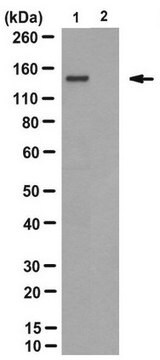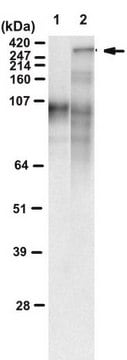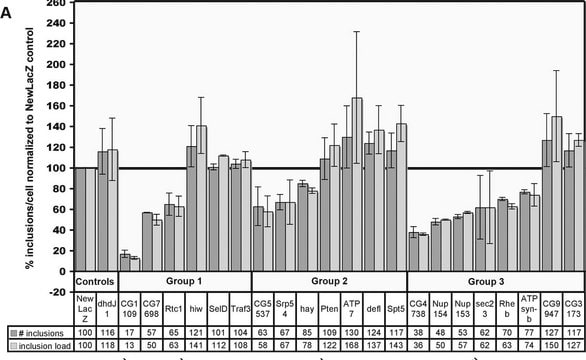MAB2166
Anti-Huntingtin Protein Antibody, a.a. 181-810, clone 1HU-4C8
ascites fluid, clone 1HU-4C8, Chemicon®
Synonym(s):
Huntingtin, Huntington′s Disease Protein, HD Protein
About This Item
Recommended Products
biological source
mouse
Quality Level
antibody form
ascites fluid
antibody product type
primary antibodies
clone
1HU-4C8, monoclonal
species reactivity
rat, rabbit
species reactivity (predicted by homology)
mouse, human, hamster, monkey
manufacturer/tradename
Chemicon®
technique(s)
ELISA: suitable
immunocytochemistry: suitable
immunohistochemistry: suitable (paraffin)
immunoprecipitation (IP): suitable
western blot: suitable
isotype
IgG1κ
NCBI accession no.
UniProt accession no.
shipped in
dry ice
target post-translational modification
unmodified
Gene Information
human ... HTT(3064) , SLC6A4(6532)
General description
Specificity
Immunogen
Application
A 1:500-1:5,000 dilution of a previous lot was used on ELISA.
Immunohistochemistry:
A 1:500-1:5,000 dilution from a previous lot was used on frozen and microwave oven treated paraffin sections (human tissue).
Immunocytochemistry:
1:500-1:5,000 on a previous lot was used on transfected cells.
Immunoprecipitation:
A 1:500-1:5,000 dilution of a previous lot was used on immunoprecipitation.
Western blot:
1:500-1:5,000. Should detect a band migrating at approximately 350-400 kDa by Western blot (Nature Genetics 10:104-110.).
Optimal working dilutions must be determined by the end user.
Neuroscience
Neurodegenerative Diseases
Quality
Western Blot Analysis:
1:1000 dilution of this lot detected huntingtin protein on 10 μg of rat brain lysates.
Target description
Physical form
Storage and Stability
Handling Recommendations: Upon receipt, and prior to removing the cap, centrifuge the vial and gently mix the solution. Aliquot into microcentrifuge tubes and store at -20°C. Avoid repeated freeze/thaw cycles, which may damage IgG and affect product performance.
Analysis Note
Normal human cerebral cortex lysate
Other Notes
Legal Information
Disclaimer
Not finding the right product?
Try our Product Selector Tool.
recommended
Storage Class Code
12 - Non Combustible Liquids
WGK
WGK 2
Flash Point(F)
Not applicable
Flash Point(C)
Not applicable
Certificates of Analysis (COA)
Search for Certificates of Analysis (COA) by entering the products Lot/Batch Number. Lot and Batch Numbers can be found on a product’s label following the words ‘Lot’ or ‘Batch’.
Already Own This Product?
Find documentation for the products that you have recently purchased in the Document Library.
Customers Also Viewed
Articles
Immunofluorescence uses antibody-conjugated fluorescent molecules for protein localization, modification confirmation, and protein complex visualization.
Protocols
Tips and troubleshooting for FFPE and frozen tissue immunohistochemistry (IHC) protocols using both brightfield analysis of chromogenic detection and fluorescent microscopy.
Our team of scientists has experience in all areas of research including Life Science, Material Science, Chemical Synthesis, Chromatography, Analytical and many others.
Contact Technical Service







